Succulents are having a major moment right now. Their funky shapes, textures, and colors make them Instagram-worthy plants that can liven up any space.
But starting or expanding a succulent collection can quickly get pricey. Luckily, there are plenty of budget-friendly ways to get new succulents without breaking the bank.
From using simple household materials for planters to understanding the essentials of succulent care, we're here to help you maximize your green space on a budget.
Keep reading as we spill the secrets to gorgeous succulents without the outrageous price tag!
Tip #1: Get Soil Mixes On A Budget

Growing succulents can be a wallet-friendly hobby when you're savvy about soil. Here's how you can nurture your green plants without breaking the bank.
- Bulk Purchases: Check out your local garden center or online retailers for larger soil or soil component bags to cut down the cost per unit, giving you more for your money.
- Repurpose and Recycle: Don't toss out old soil from planters or beds; repurpose it! Mix in homemade compost or reuse the soil from other garden projects.
- Go Generic: Look for generic or store-brand soil mixes. They are often much cheaper and provide the same nutrients your succulents need.
- Substitute When Possible: For example, instead of branded perlite, use pumice or coarse sand to improve drainage.
Tip #2: Make DIY Fertilizers To Cut Costs
With simple ingredients from your home, you can whip up nutrient-rich concoctions to keep your succulents happy without stretching your budget!
Make Compost Tea

Compost tea provides a nice vitamin cocktail for your succulents. Here's how to make it:
- Fill a 5-gallon bucket one-third full with compost, then add water to cover the compost by at least an inch or two.
- Stir the mixture thoroughly, similar to steeping tea. Continue stirring a few times daily for five days to allow the compost to release nutrients into the water.
- After five days, strain the liquid into another container using a mesh screen or porous fabric. The nutrient-rich compost tea is now ready to use!
Tip: Use well water, rainwater, or distilled water to avoid chlorine, or let tap water sit for 24 hours to remove any traces of chemicals.
Crushed Eggshells

Calcium-packed and cost-free, crushed eggshells provide a mineral boost. To use eggshells:
- Rinse them to remove any remaining eggs.
- Dry and crush them into a fine powder.
- Sprinkle the powder around the base of your plants.
Worm Castings For Aeration

Worm castings improve soil aeration, encouraging healthy root growth. Before planting a succulent, you can mix the worm castings into the soil.
Or, if you already have succulents, you can sprinkle the worm castings on top of the soil around them. This helps the succulent's roots stay healthy.
Tip #3: Learn to Propagate Your Succulents Instead Of Buying New Plants
Growing your succulents through propagation is not just budget-friendly but also incredibly rewarding!
Propagating from Leaves

Leaf-cutting involves carefully taking a leaf from the succulent, placing it on soil, and letting it root under sunlight with a bit of misting.
It works best for succulents with fleshy leaves, like Echeveria or Sedum species.
Read more: How to Propogate an Echeveria
Propagating from Stem Cuttings
Stem cuttings involve a similar process, just that instead of leaves, you'll be cutting a healthy succulent stem, allowing the cut portion to dry and callous, and then planting it in soil, ensuring it's hydrated for effective rooting.

This method is great for succulents that branch or have rosette shapes on their stems, like Aeoniums and some Jade plants.
Why Propagating is Better than Buying
Propagating your succulents is considerably more cost-effective than purchasing new plants.
To buy a new succulent, you might spend anywhere from a few dollars to over twenty, depending on the species and size.
Meanwhile, propagating typically requires only your existing plant, some soil, and a pot. Over time, the savings can be significant, especially if you become proficient at nurturing your propagated plants to maturity.
Tip #4: Try These Water Conservation Methods
Below are some budget-friendly tactics to keep your succulent garden thriving while conserving precious water.
- Early Morning Watering: This timing minimizes evaporation and ensures that water goes right to the roots where it's most needed.
- Reuse Household Water: Reusing water from rinsing vegetables or rice is a good idea. Just make sure it doesn't have harmful detergents or food residue.
- Collect Rainwater: Even a simple barrel under a downspout means you have a supply of soft, chlorine-free water for your plants, exceptionally perfect for when the weather's dry.
- DIY Drip Irrigation: Create a custom drip irrigation system using old bottles or hose pieces to deliver water directly to the base of each plant.

Tip #5: Study Some Seasonal Care Tips
Looking after your succulents in each season helps them stay healthy and saves you money.
This may be obvious, but when you give them the right care for the time of year, you don't have to spend on buying or cultivating new plants. Let's learn how to do this right.
- Autumn: As temperatures begin to drop, it's wise to prepare your succulents for the upcoming winter. Start by reducing watering frequency and checking for pests.
- Winter: Water sparingly, only when the soil is completely dry. To prevent frost damage for outdoor succulents, provide a cover or bring them indoors.
- Spring and Summer: Now's the time to water your succulents more frequently as they start to use more with the rising temperatures — but always let the soil dry out between watering sessions.
Tip #6: Some Easy, Cheap Ways To Keep Bugs Off Your Succulents

Discover straightforward and low-cost strategies to prevent pesky insects from making a home on your beloved succulents.
These methods will help you maintain healthy, bug-free plants without breaking the bank.
- Use Rubbing Alcohol: Rubbing alcohol can be a safe and effective way to treat pest-infested succulents. Simply dab a cotton swab or spray it on visible pests.
- Soapy Water: Alternatively, mix a teaspoon of mild dish soap with a quart of water and spray it on affected areas.
- Cinnamon Powder: Lightly sprinkle cinnamon powder on the soil surface around your succulents. This is especially helpful in preventing fungal gnats.
Tip #7: Repurpose Household Items As Planters For Succulents
Turning items you already own into succulent planters is not only budget-friendly, but it also adds a unique touch to your home décor!
However, always ensure they have adequate drainage to prevent root rot and keep your plants healthy.
Vintage Teacups
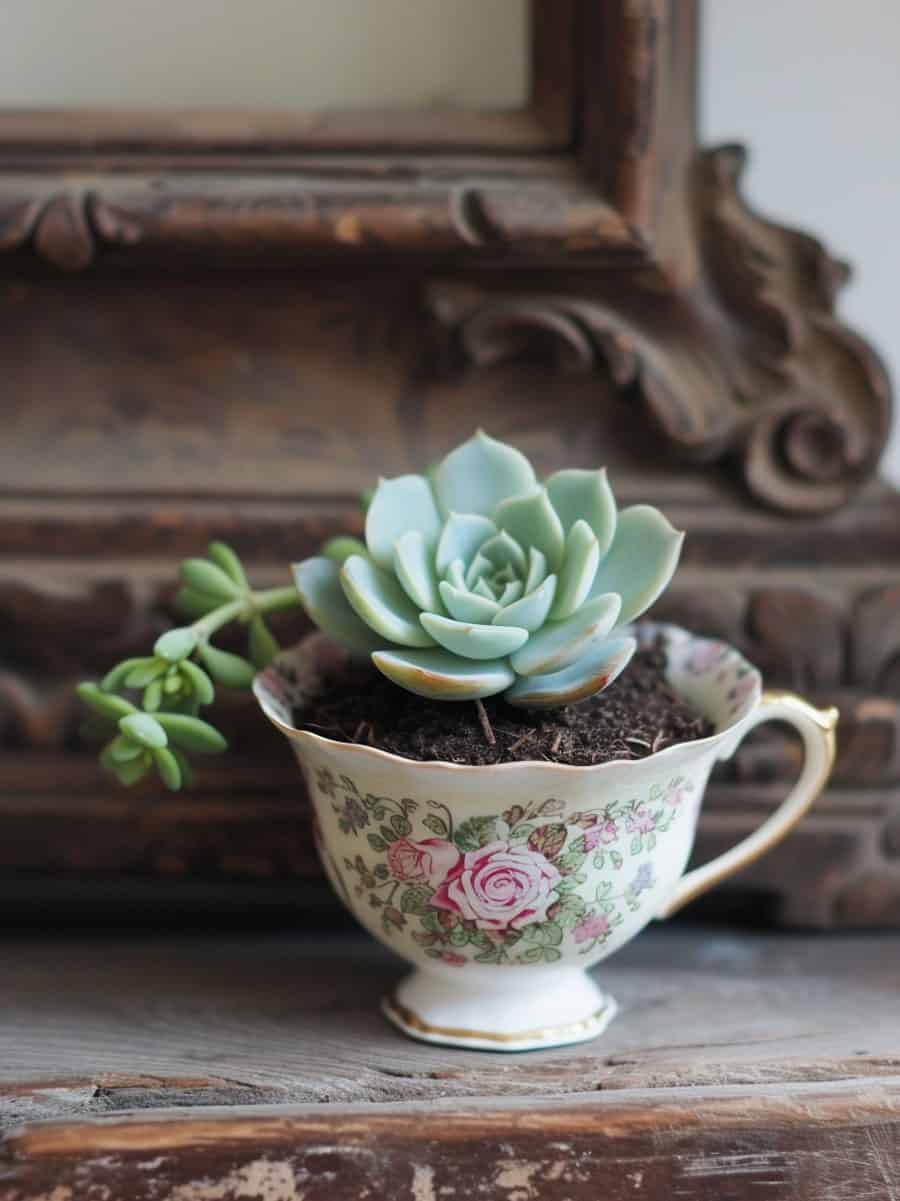
Vintage teacups make delightful succulent holders. With their intricate patterns, they add a touch of elegance to any space.
Mason Jars
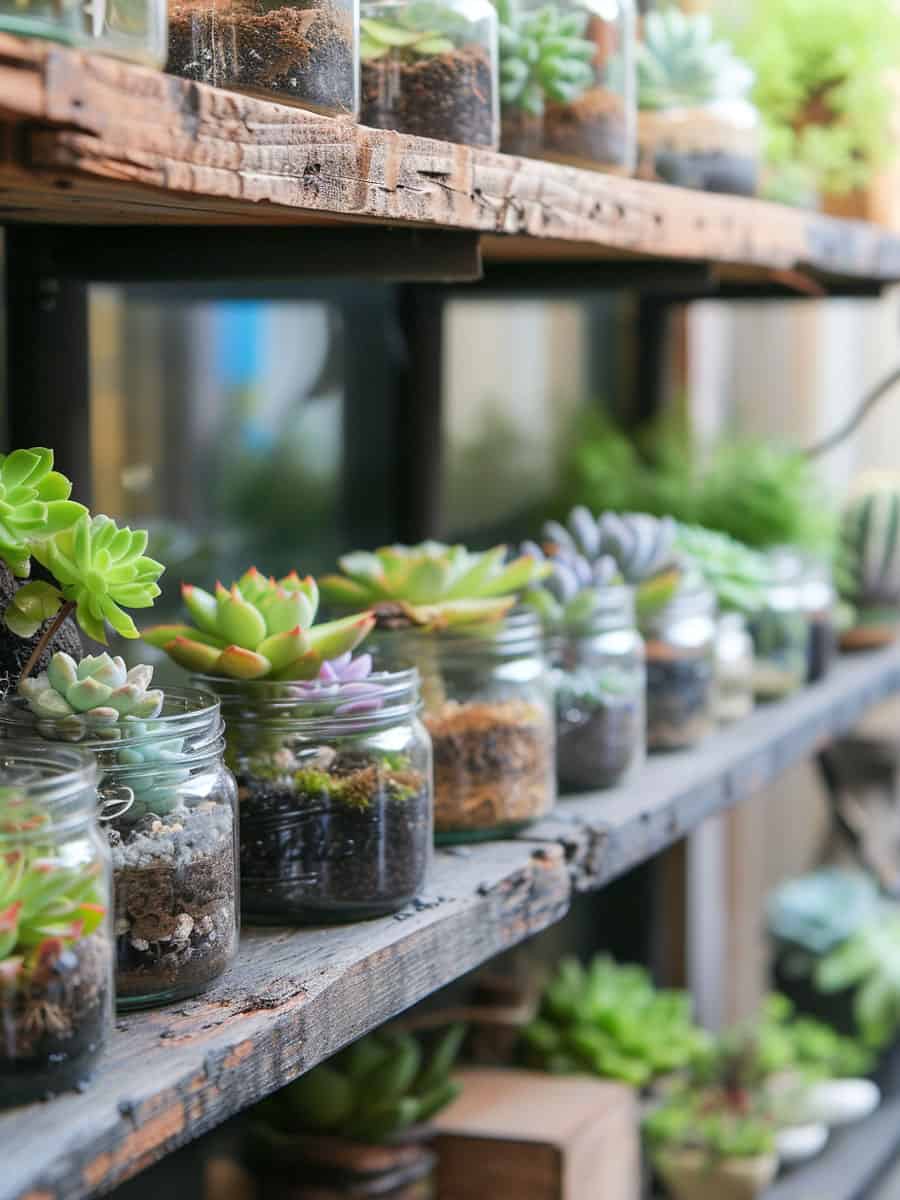
Mason jars provide a rustic yet modern feel. The clear glass showcases the layers of rocks, soil, and roots, turning your plant into a living piece of art.
Tin Cans
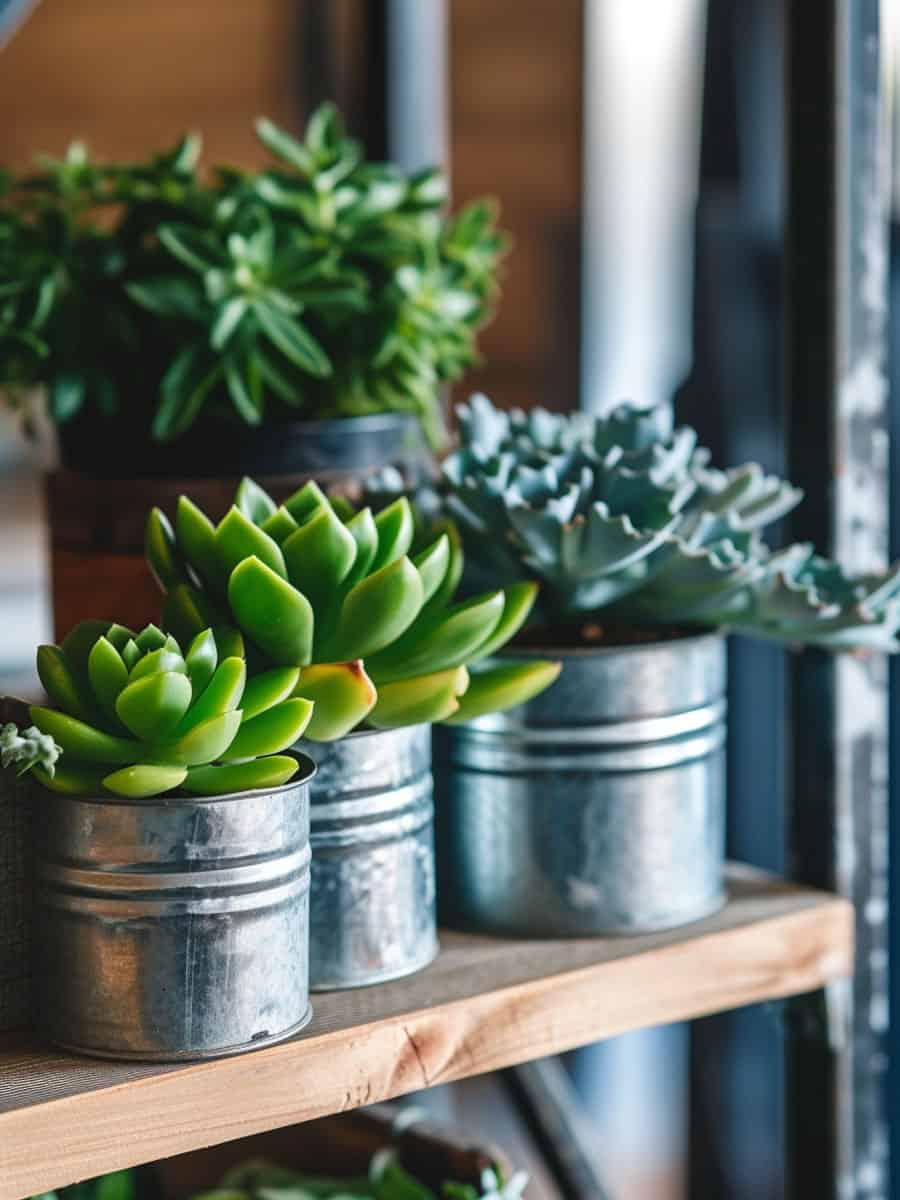
Empty tin cans are resourceful for an industrial look. Clean them well and punch holes in the bottom for water drainage.
Light Bulbs
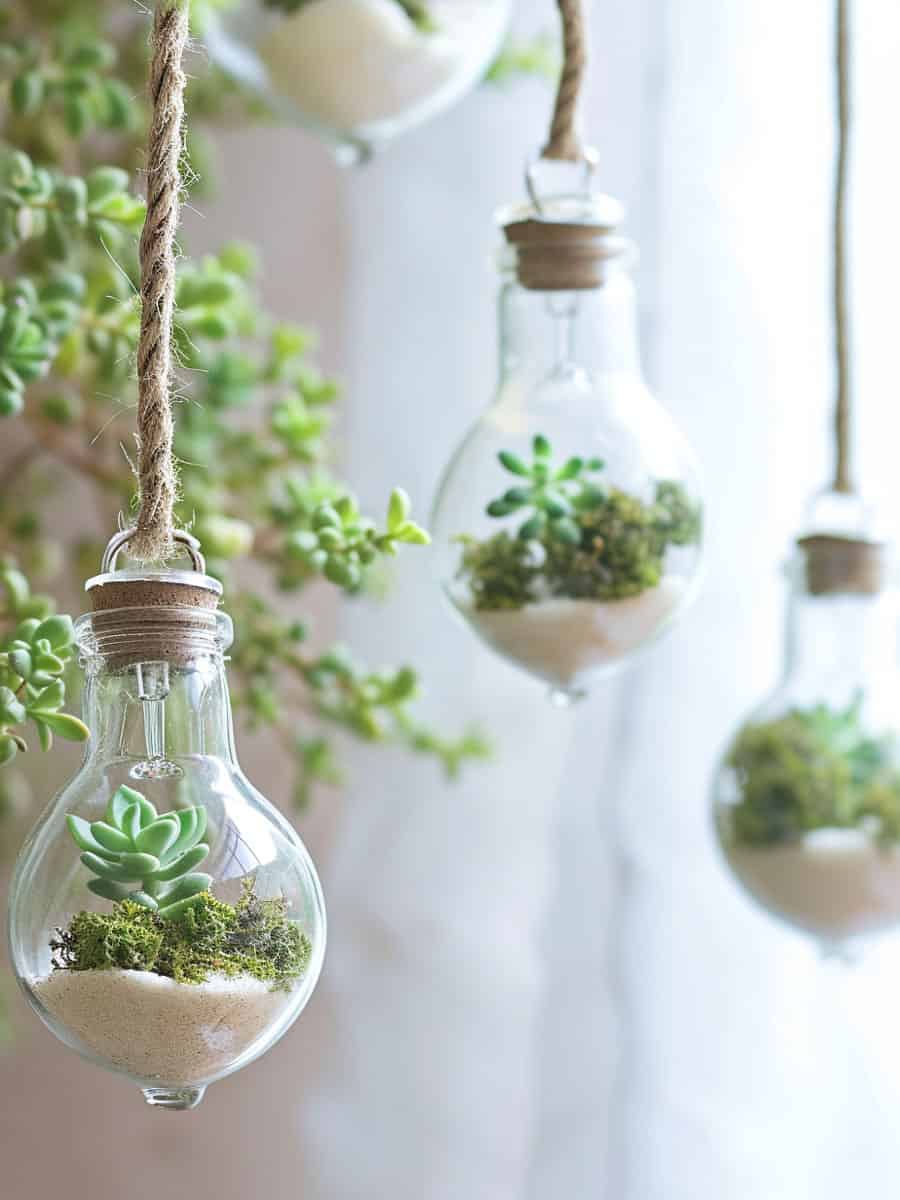
Old light bulbs can be upcycled into charming mini-terrariums. Remove the interior parts and fill them with sand and succulents for a delicate, floating garden.
PVC Pipes Wall Planter
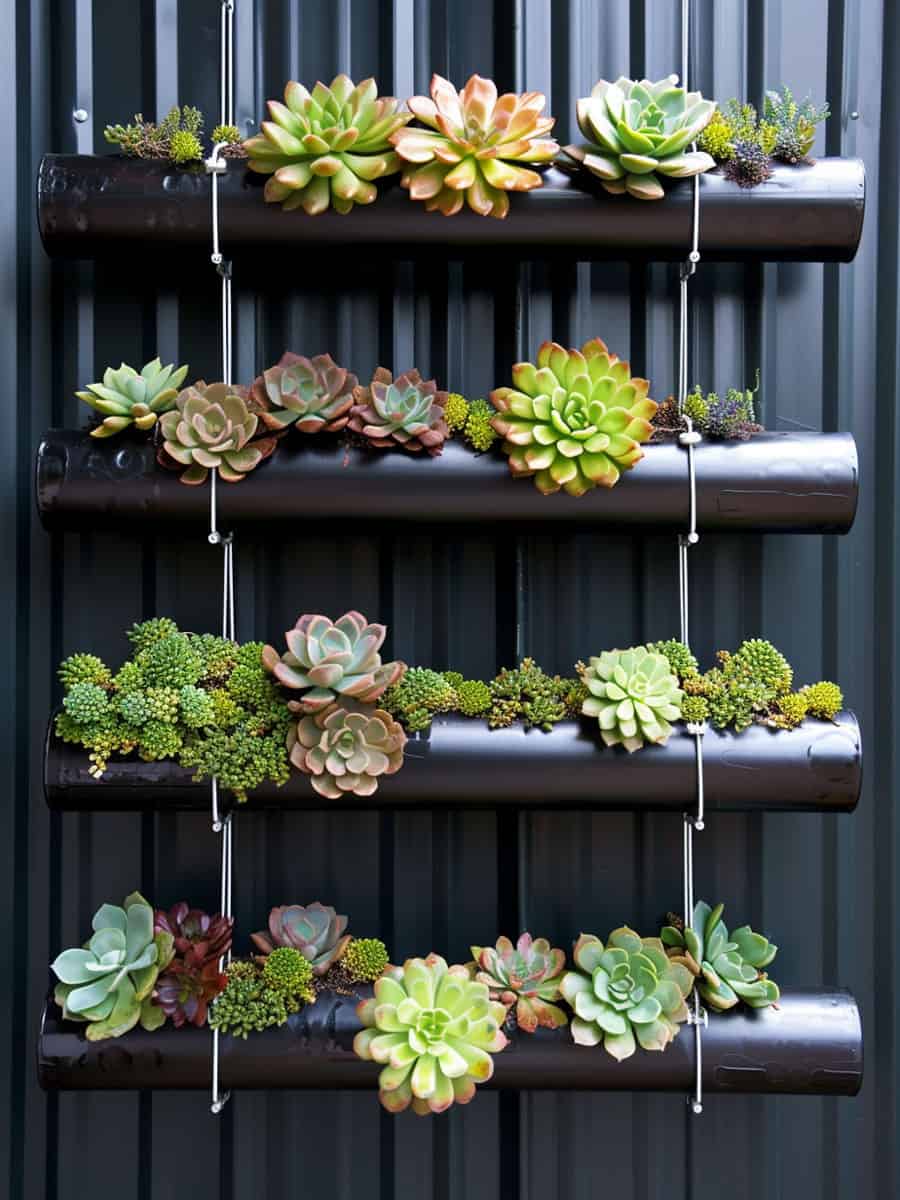
PVC pipes can be transformed into a striking wall planter. Cut into sections, seal one end, and mount them on the wall for an innovative display of greenery.
Chipped Or Mismatched Ceramic Bowls
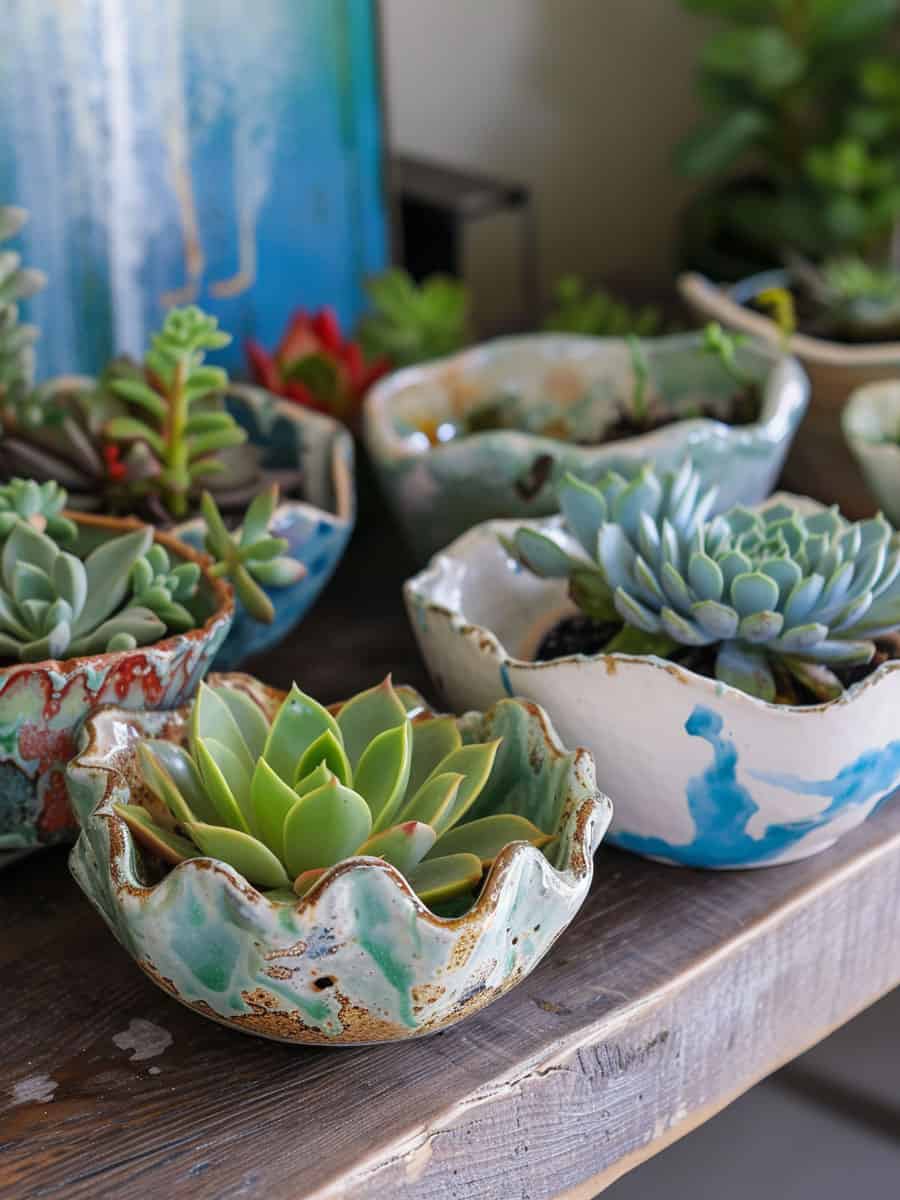
Don't toss those chipped or mismatched ceramic bowls. Their varied sizes and depths make for an interesting arrangement on any table or windowsill.
Old Kettle Pots
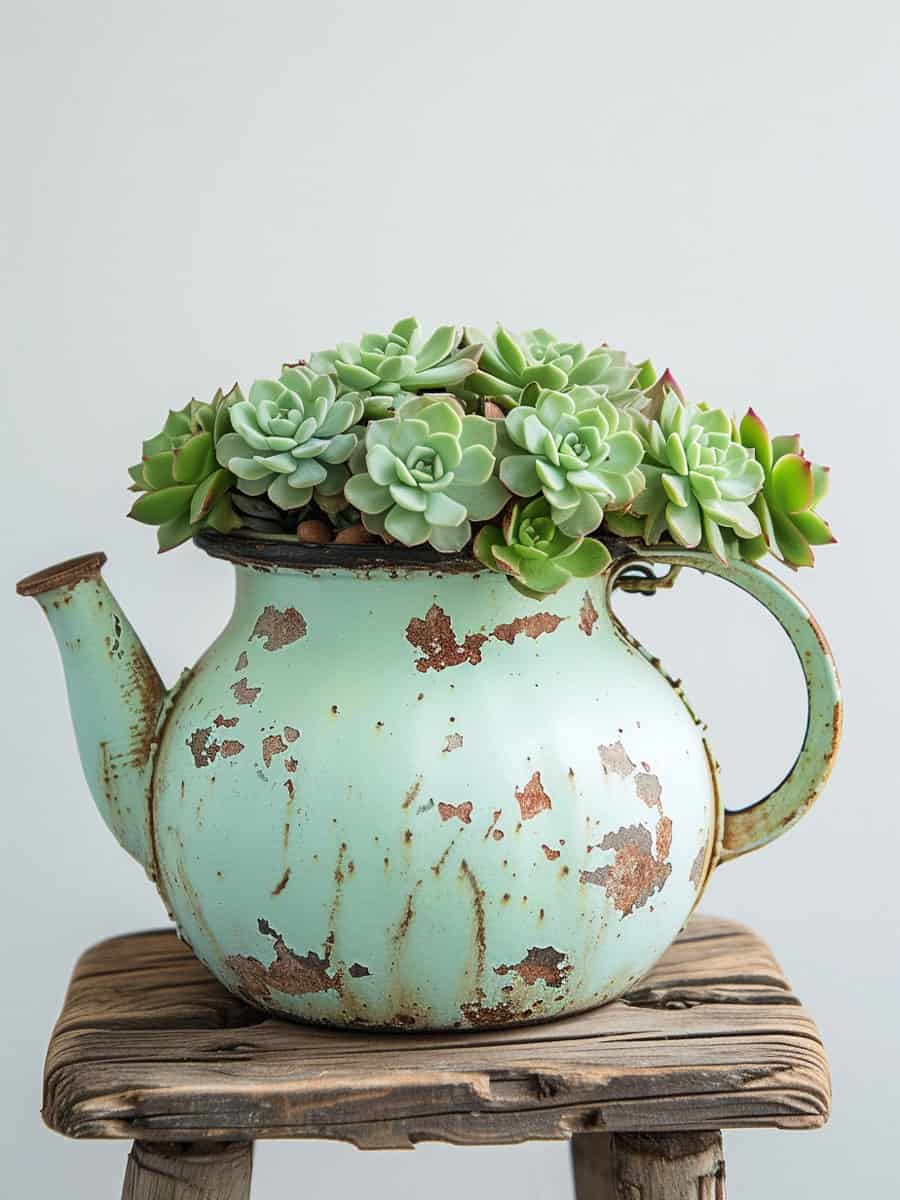
Charming and vintage, old kettle pots make for whimsical planters with their stout shapes and spouts.
Small Wooden Crates
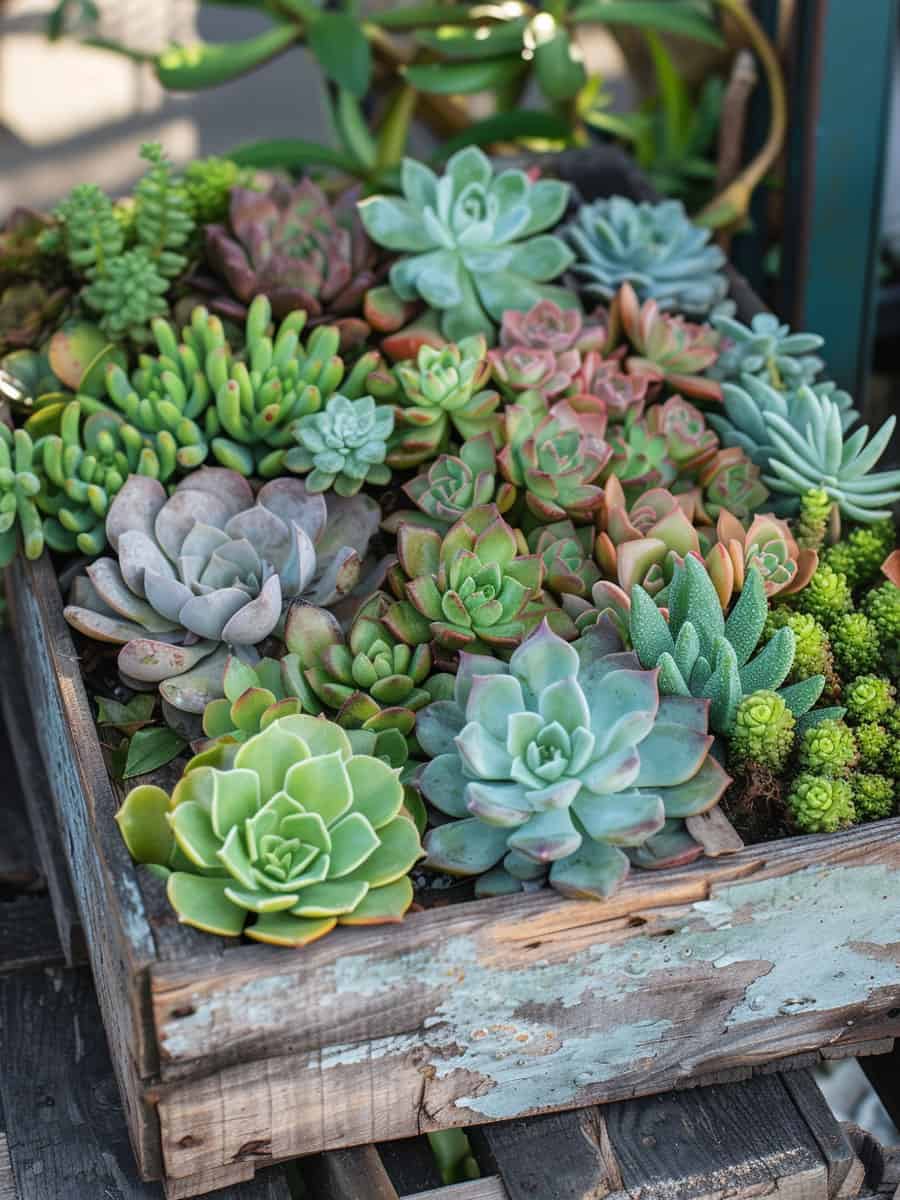
Ideal for creating larger succulent arrangements, wooden crates bring a farmhouse flair to your garden or balcony.
Picture Frames
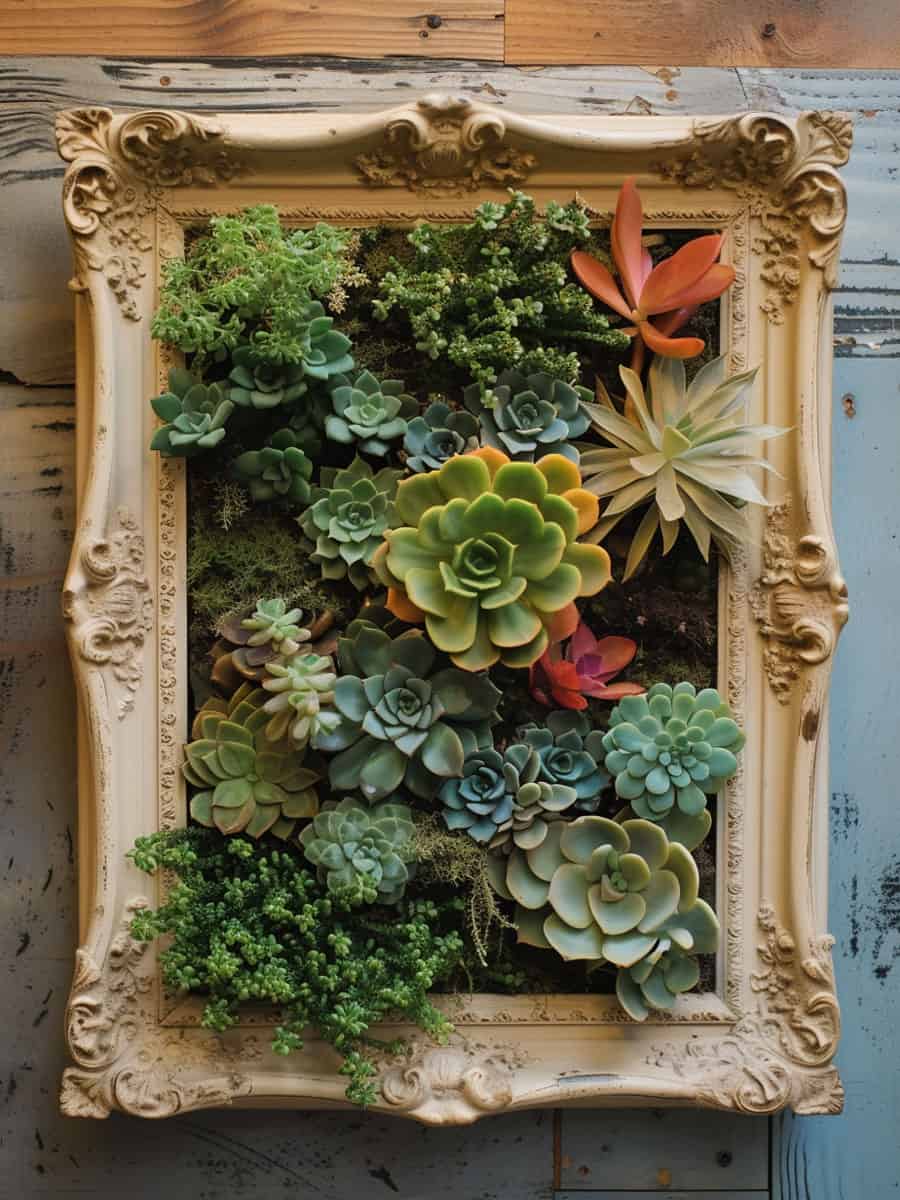
Fill your old picture frames with soil, add your succulents, and hang them up to create a stunning wall display that breathes life into any room.
Candle Holders
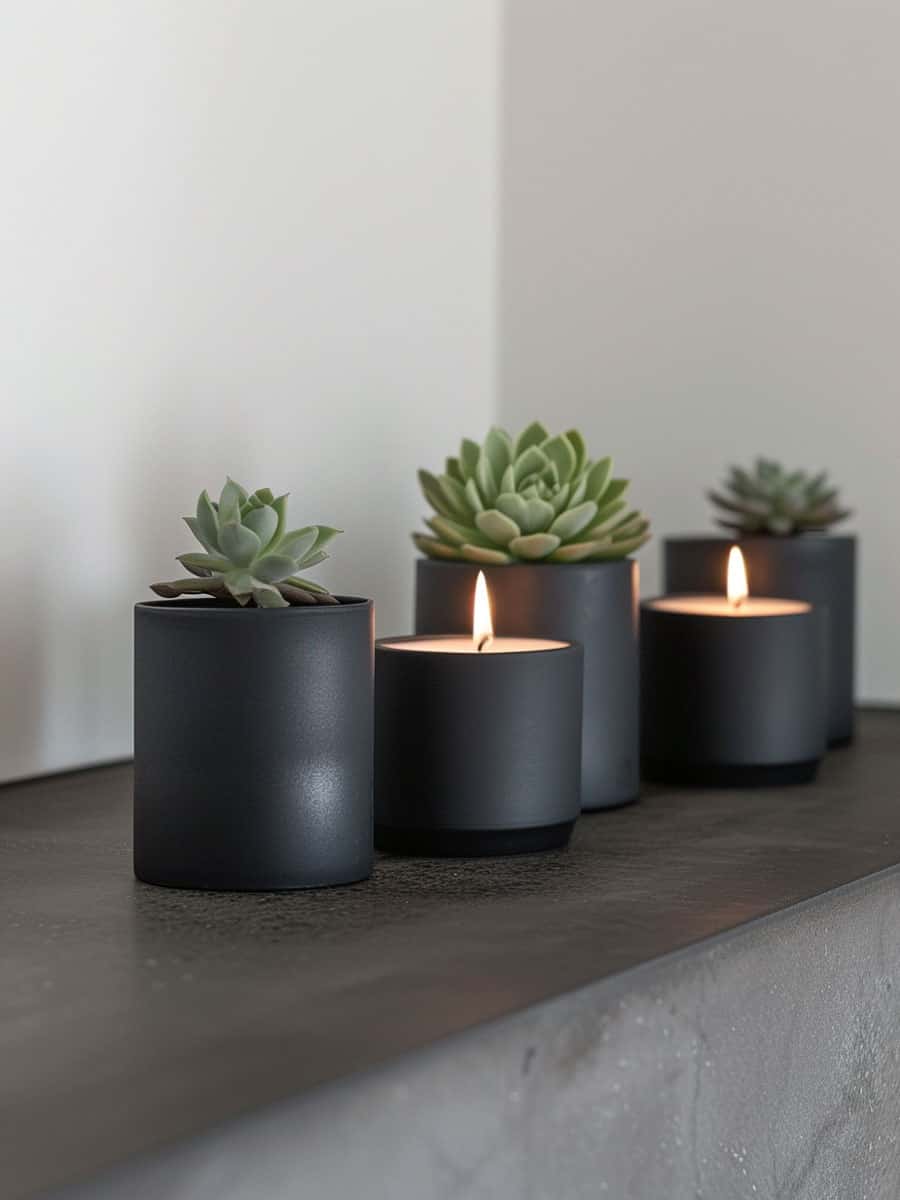
Ideal for smaller varieties, candle holders offer an elegant base, making your succulents stand out on your dining table or mantlepiece.
You can find more recycled planter inspirations by reading this post!
Tip #8: Join Community Exchange And Swaps
Expanding your succulent collection on a budget is a breeze when you tap into the community exchange and swap resources.

You'll find that fellow plant lovers are often eager to share their surplus cuttings, and you might just make some new friends along the way!
Local Gardening Clubs
Connect with plant lovers and swap succulents at regular meet-ups found through community centers, libraries, or online.
Online Plant Swap Forums
You can post offers to exchange cuttings or plants on this space. Just be sure to follow their rules for successful swaps!
Social Media Groups
These groups cater to diverse interests and regions, making it easy to connect with local enthusiasts or even international fans!
Your Journey in Budget-Friendly Succulent Care
You've learned how easy and budget-friendly it is to create a succulent haven, even if you're new to these resilient plants.
Your green thumbs and enthusiasm are the keys to a successful succulent garden. Enjoy the process and watch as these hardy little plants bring life and beauty into your world!
